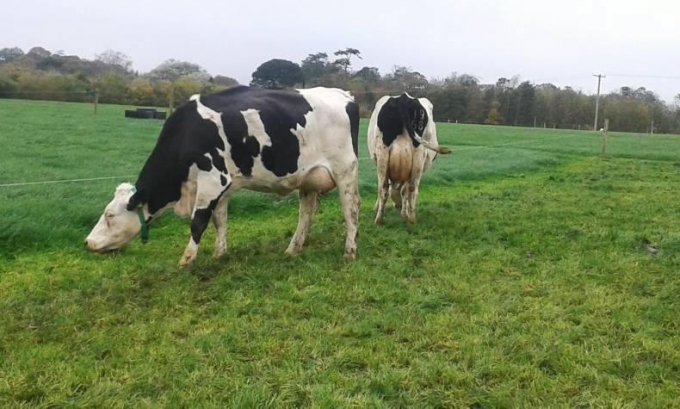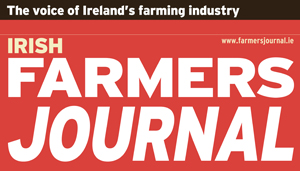Dairylink: Grass management and breeding on agenda at Johnstown
14th November 2015

Autumn grazing management and performance at Teagasc Johnstown Castle research farm.
Last week, the Dairylink Ireland group travelled to the Teagasc Johnstown Castle research farm to see how the autumn grazing management and breeding policy they have adopted has contributed to herd performance.
Farm manager Aidan Lawless and Teagasc's Joe Patton highlighted the overall strategy and management of the Johnstown herd and explained how both these key areas, if managed correctly, can have a major influence on herd performance.
Cost control is a major element on any progressive dairy farm, especially in the current financial situation, and Dairylink farms are no different, with reducing production costs a key element of the project.
The visit to Johnstown illustrated excellent grass management, its role in controlling on-farm feed costs and the importance of measurement to really capitalise on grass utilisation.
Also, from a breeding perspective, the farmers saw the focus at Johnstown on breeding the correct cow to fit its production system, and with bull selection just around the corner for many autumn-calving herds, this topic was very relevant.
The herd at Johnstown Castle is split-calving, with 60% of cows calving from September to November and the remaining cows calving in the spring, starting in February. A summary of the research centre’s annual performance in shown in Table 2.
Grass management
Capitalising on excellent grazing management and grass-growing conditions is the key driver for the relatively low feed costs (5.82c/litre) on the Johnstown farm.
Maximising grass utilisation through extended grazing, monitoring growth and basing decisions on this information, and simply striving for top-quality grass ahead of the herd at all times is the core management philosophy.
Aidan Lawless explained to the group: "Autumn grass management starts in September when we create a feed budget. To maintain grazing efficiency in the autumn, silage is kept out of the diet for as long as possible.
"Grazing conditions this year have allowed the herd to graze day and night up to last week with no silage.
"The result is increased grass utilisation and paddocks closed in ideal condition, which will benefit us when the cows return to grass in February," he said.
The grazing platform is very well structured, with weekly grass measurement and daily allocation of grass a key aspect of the routine management of this herd.
Closing of paddocks started on 5 October this year and 85% of the grazing platform is now closed. The remaining 15% will be grazed by spring-calving cows through daytime grazing, while the freshly calved cows have been housed and moved on to the full winter diet last week.
The target closing farm cover is 680kg DM/ha, with some paddocks carrying 1,200kg into the winter.
Aidan explained the importance of resisting grazing off these higher covers, as this grass is very beneficial when the herd is turned out at high demand in the first week of February.
By the day of the visit, approximately 70% of autumn-calving cows had calved, but no silage had been fed to any of the herd and all cows were still grazing day and night.
At this point, the autumn calvers were yielding 27 litres per cow.
Johnstown allocates concentrate based on grass providing approximately 17 litres per cow and on average, cows are allocated 4.5kg/head/day fed through the parlour.
Breeding for the system
Sire selection is based around high-EBI bulls, with fertility and milk solids prioritised over the last 10 years in the selection criteria for the herd.
Fertility performance and recorded milk solids for the herd indicate the breeding policy is working.
Joe Patton said: "We don’t focus on milk volume bulls – sires with +150 to 180kg milk gives us a cow capable of 7,200kg to 7,500kg milk with over 3.50% protein.
"From a health and fertility perspective, the herd performance has improved over a 10-year period (<3% metabolic disease events in the last five years and calving interval of 377 days).
"This means that although the cows are not hugely high in milk potential, they achieve a high proportion of their potential by spending more days in milk and returning in-calf quicker," he said.
The key objective is to breed a cow which can produce a high level of milk solids without very high volumes of milk.
Breeding criteria is set to focus on high total kilogrammes of milk solids (+30kg fat and protein), and also on bulls with high percentage fat and protein to ensure solids are driven by content rather than volume.
Johnstown milk solids recorded on the day of the visit were 2.04kg/cow (4.25% butterfat and 3.55% protein).
This article has been reproduced with the kind permission of the Irish Farmers Journal. Please click on the below Irish Farmers Journal logo to be brought to additional dairy articles
